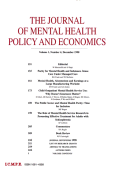
“Extreme obesity is a core phenotypic feature of Prader-Willi syndrome (PWS).
Among numerous metabolic regulators, the endocannabinoid (eCB) system is critically involved in controlling feeding, body weight, and energy metabolism, and a globally acting cannabinoid-1 receptor (CB1R) blockade reverses obesity both in animals and humans.
The first-in-class CB1R antagonist rimonabant proved effective in inducing weight loss in adults with PWS. However, it is no longer available for clinical use because of its centrally mediated, neuropsychiatric, adverse effects.
CONCLUSIONS:
Dysregulation of the eCB/CB1R system may contribute to hyperphagia and obesity in Magel2-null mice and in individuals with PWS. Our results demonstrate that treatment with peripherally restricted CB1R antagonists may be an effective strategy for the management of severe obesity in PWS.”










